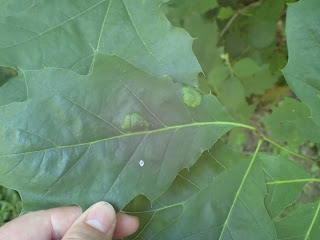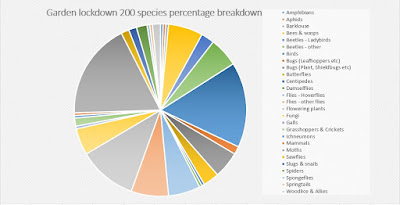The Whitlingham Bird Report for 2024 is now available to download from the Bird Reports page or from here
NORWICH: Zombie aphids
NORWICH: Some nice bees
WHITLINGHAM: July WeBS counts plus some Fiddle Dock
I should also mention that several of the Mute Swans had orange leg rings with black lettering. This is a long standing East Anglian ringing project that has received new emphasis recently, with UEA Ringing Group member Stephen Vickers ringing around 50 swans locally. If you do see one and can read the ring then please report it to the scheme organiser Mike Reed using the details on this link http://www.cr-birding.org/node/1413 (if you see it at Whitlingham I would appreciate hearing about it too!)
As always I kept a look out for anything of interest on my way round. Batia lunaris was a smart little moth on the hedge near the car park, whilst Fiddle Dock was a new species for my site plant list, as was Short-fruited Willowherb (I'd genuinely not seen the former here before, whilst I had seen the latter but not identified it correctly). The small soldierfly Pachygaster atra was already on the site list having been recorded by Tim Hodge but was new for me, and finally using the new ALS lure I confirmed that Lunar Hornet Moths are present on site. I had long thought they probably were, but had been unable to find any exit holes - perhaps they are lower down the trunk than Hornet Moth, and therefore hidden in the udnergrowth.
Pachygaster atra
Ceratapion gibbirostre (a long pointy weevil on thistles)
Lunar Hornet Moth
NORTH NORFOLK: Overstrand beach
NORWICH: Some more commute highlights
BIRDS ON BEER: Magpie Brewery
NORWICH: Garden lockdown list days 98 to 101 (the last day by day summaries)
NORTH-EAST NORFOLK: The best of Bacton Woods
NORWICH: Garden lockdown list 200 species breakdown
If you want to look back at the species I've recorded then you can go to the 'labels' section of the blog (on the right hand side and scroll down) and click on the 'lockdown list' label.
Anyway, I have produced a breakdown of the first 200 species by category and percentage below.
Also of interest, I check how many of the species were new to the garden, and it was 62/200 (31%), which is quite pleasing. I also looked at how many were new to me, and that was 25 (12.5%), which is also quite a good ratio.
NORWICH: Garden lockdown list day 97 - some more moths
Another go with the moth trap, and numbers had increased a bit, with 15 species of moths. Also in the trap was a Spongefly, a small lacewing-relative that feeds on freshwater sponges, and a Lesser Water-boatman sp. I'm not sure if the water boatman can be identified (it a female, which are harder to key), so it's not included on the list. Ten of the moths were new for the lockdown list, which took me past the 200 mark - I'll post a breakdown of the 200 separately.
193. Sisyra nigra (a spongefly)
194. Sycamore (moth)
195. Buff Ermine
196. Cinnabar Moth
197. Riband Wave
198. Ancylis achatana
199. Little Grey moth
200. Common Pug
201. Large Fruit-tree Tortrix
202. Elephant Hawk-moth
203. Treble Brown-spot
204. Bee Moth

























































